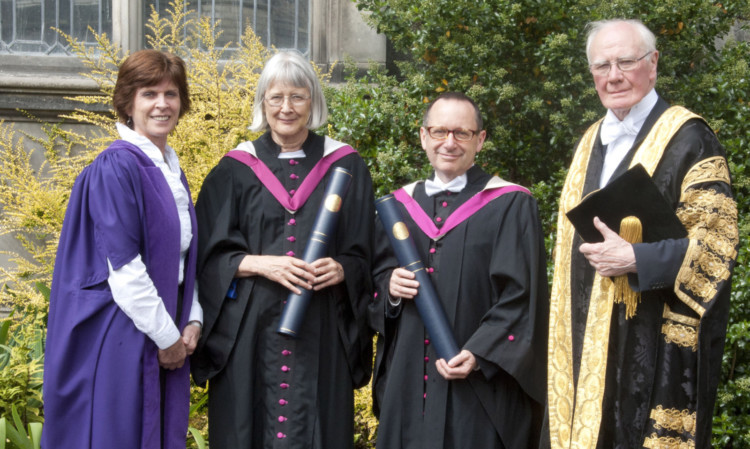A mathematician who designed the first programmable pocket calculator was among those honoured by St Andrews University.
Professor Bernard Silverman was joined by fellow mathematician Professor Dusa McDuff and sociologist Professor Silvia Gherardi as the latest to be awarded honorary degrees by the famous institution.
Professor Silverman, who is chief scientific adviser to the Home Office, was awarded a Doctor of Science.
He showed his mathematical colours early by winning a gold medal at the 1970 International Mathematical Olympiad, the only person year from this side of the Iron Curtain.
After a short spell in industry, where he designed the first ever programmable pocket calculator, the Sinclair Cambridge, he began his academic career at Oxford University.
His published papers include work on cot death, on materials science, on positron emission tomography, on how ants build their nests, on the pathology of medieval bones, and on human genetics.
In January 2010 he became president of the Royal Statistical Society.
He stepped down the following month, on the announcement of his appointment to the Home Office.
Professor Rosemary Bailey, laureator, said in her address: “Bernard took up his Home Office post precisely because he wanted to put his mathematical and statistical expertise to good effect in a range of areas that affect us all.”
His most recent project is in connection with the new legislation on modern slavery.
The hope is to build up a full picture of the scale and nature of the problem, including the ‘dark figure’ of cases that never come to our attention.
Professor Bailey said: “I cannot overemphasise how important it is to have someone with his level of statistical expertise and general scientific awareness working for the Home Office.”
Fellow mathematician Dusa McDuff received a Doctor of Science. She was lauded for producing seminal and ground-breaking work on symplectic geometry.
Born in London, but growing up in Edinburgh, she has received numerous prizes and recognitions for her work.
For example, she was the first person to be awarded the Satter Prize in 1991.
Sociologist Professor Silvia Gherardi, one of the founders and leaders of the interdisciplinary research unit RUCOLA (Research Unit on Communication, Organisational Learning and Aesthetics), received a Doctor of Letters.
Her work has been widely published in leading journals in English, French and Italian, and has become foundational for researchers in the field.
